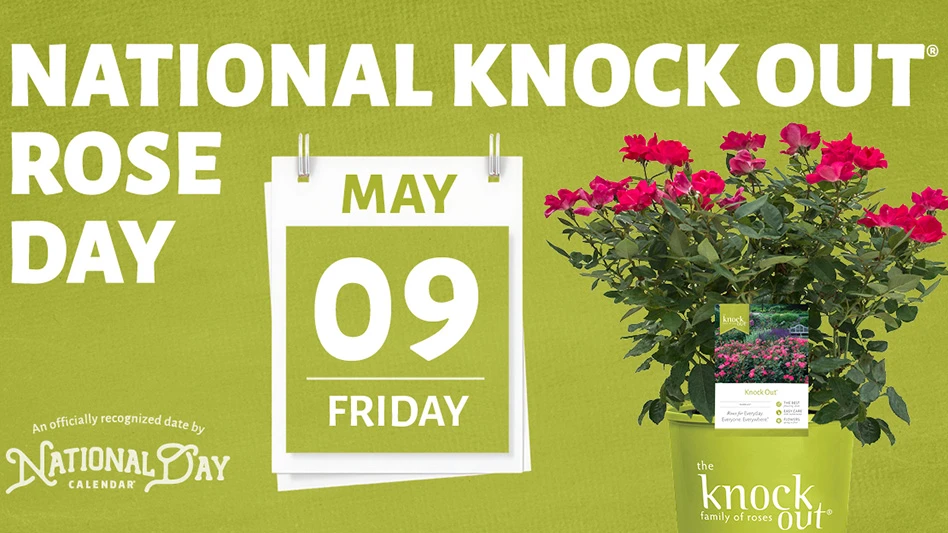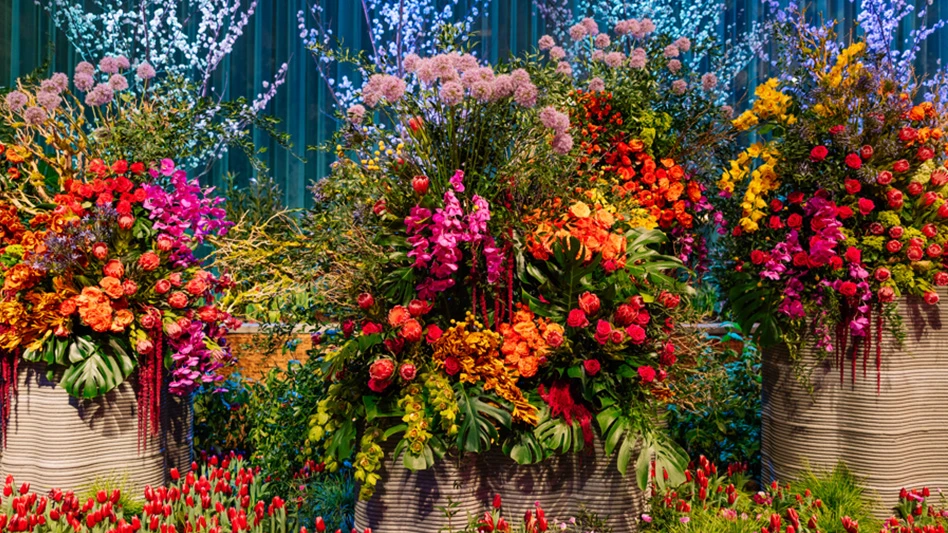
Growing up with a love of gardening and a fascination for biology, Sarah Brewer naturally found her passion in plant science. Her lifelong pursuit of a horticultural career led her to new coastlines and crops far from her home turf of Olympia, Washington, before landing her dream breeding job.
After earning bachelor’s degrees in integrated plant science and biochemistry from Washington State University, Brewer “took a detour into the lab,” working as a laboratory technician for a biosciences company that specialized in tissue culture production of bamboo, woody ornamentals and berries. “At some point, I realized that I missed actually being around plants,” she says. “Working with cells in a test tube is not the same as actually being in the greenhouse.”
To get back to plants, she pursued a partnership with the USDA Agricultural Research Service at the University of Hawaii, where she researched a biopesticide to control coffee berry borers. “I was working with plants again, but there wasn’t enough science for me,” she says. “So, that spurred me to go back to school to become a plant breeder.”
While earning her Ph.D. in horticultural sciences at the University of Florida, Brewer studied the breeding and genetics of tropical fruits, particularly papaya. When she graduated in August 2021, she jumped at the chance to pivot from fruit to flowers as an ornamental plant breeder in Ball Horticultural Company’s PanAmerican Seed division.
“As ornamental plant breeders, we’re able to focus on so many things besides just yield,” she says. ‘’We have license to think about flower size, color, branching, heat tolerance and so much more.”

Balancing demands
Brewer leads breeding programs for four ornamental annual crops at Ball, including vinca, osteospermum, double petunia and petchoa, an intergeneric hybrid between petunia and calibrachoa. She breeds both for seed and vegetatively propagated products.
“For all of our breeding work, we’re trying to both respond to the current needs of our customers and proactively anticipate what they’re going to need or want before they even know they need or want it,” she says.
For example, Brewer and other Ball breeders are generally trying to produce plants that grow reliably with fewer inputs, less heat in the winter, more heat and drought stress in the summer, increased disease resistance and more resiliency in a range of growing environments. Plus, “of course, we want plants that are pretty,” she adds. “In the past, you could get away with it only being beautiful, but that might not be enough anymore.”

Accelerating results
Brewer’s programs employ traditional breeding methods. “That means we’re making crosses between two different plants with desirable characteristics to create new combinations,” she says.
Though this conventional approach certainly has its benefits, the biggest challenge is time.
“The R&D in plant breeding, even with something as fast as annuals, takes forever. It’s a long timeline from ideation to launch, probably five to seven years,” she says. “Breeders tend to be an impatient bunch because we’re always trying to find innovative ways to make the process faster and more efficient.”
One way she speeds up product development is by supplementing new breeding technologies, like molecular markers to indicate certain traits, “on a faster timeline, utilizing less space than old-fashioned waiting,” she says.
Another tactic is manipulating the controlled environment inside the greenhouses, where the majority of her breeding happens.
“That infrastructure is critical because a breeder’s worst enemy is time,” she says. “If we can get higher light, longer days or more heat, we can get things from seed to flower quicker and increase the number of generations we can get in the same amount of time.”

Making introductions
Since the breeding timeline is so long, and Brewer has only been at Ball for three years, she hasn’t introduced her own hybrids yet. But she has been “fortunate to help shepherd” new plants to market from her peers.
For example, Petchoa Caliburst Yellow— bred by Jason Jandrew, Ball’s chief product development officer and global director of plant breeding,— had already been approved for commercialization when Brewer joined Ball. She got to usher it through late-stage trialing and research to ensure that it performed as expected when it launched to the retail market in 2024.
Other crops Brewer pushed past the finish line this year include Vinca Titan-ium, bred by regional breeding director Ockert Greyvenstein, and Osteospermum Akila Hawaii Sunset, bred by now-retired plant breeder Linda Laughner. The opportunity to learn from these fellow breeders, and the rest of Ball’s 36 breeders worldwide, has been instrumental in Brewer’s breeding career. Still, she’s eager to see her own creations get commercialized, too.
“I’m stoked to be where I’m at,” she says. “I just want to beat that clock, that five- to seven-year timeline, and see products I’ve developed hit the market and make an impact.”

Explore the August 2024 Issue
Check out more from this issue and find your next story to read.
Latest from Greenhouse Management
- Tony Abbas named vice president of sales and business development at Prospiant
- Grant awarded to test western U.S. wood species for use as wood fiber potting substrate
- Pennsylvania Horticultural Society announces 2025 Gold Medal Plant winners
- GIE Media Horticulture Group wins five regional 2025 Azbee Awards of Excellence
- Terra Nova Nurseries introduces rust-free and disease-resistant heucherella
- John T. Nickel, founder of Greenleaf Nursery Co., passes away at 89
- Three tours offered at 2025 Farwest Show
- Garden Media Group announces sixth annual Women in Horticulture Week





